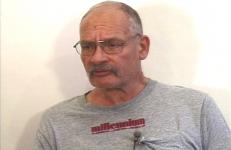
This section comprises taped interviews with artists, architects, musicians, critics and other creative practitioners, recorded in conversation with Video Data Bank staff, colleagues from the School of the Art Institute faculty, and others knowledgeable about the particular interviewees work.
The first interview dates from 1976, the year of VDB’s official inauguration, and VDB continues to add to the collection to this day, recording and producing approximately ten new interviews a year. Many of the interviewees are guests of SAIC departments, such as the Visiting Artists program or Conversations at the Edge screening series, or invitees of the Society for Contemporary Art. The VDB interviews supplement these visits, allowing for an in-depth conversation that underlines the development of an artist's practice.
In this interview, Brian Holmes, an influential art critic, activist and translator, discusses social forms of alienation, human ecologies of power, and the impact of technology on geopolitical social networks. Holmes reflects on his ongoing study of the ways in which the rhetoric of revolution has been institutionalized, as well as artists’ resistance to such cooption. For him, artists working in collectives have the potential to create a new artistic milieu that is not aligned with the dominant model of production. This argument is born out in his published collection of essays, Hieroglyphics of the Future (2003).
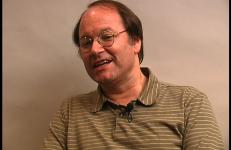
In this interview with Carl Bogner, Sky Hopinka (b. 1984) discusses his process of becoming a video artist and his personal approach to documenting Indigenous landscapes and cultures. Hopinka is a member of the Ho-Chunk Nation of Wisconsin, and he is also an educator in Chinuk Wawa, a language indigenous to the Lower Columbia River Basin. Hopinka’s practice involves experiments within the cinematic language of documentary.
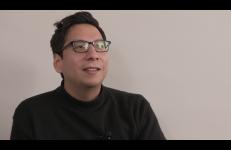
Documentarian and independent film producer Warrington Hudlin co-founded the Black Filmmaker Foundation in the late-1970s to help develop and promote emerging artists. More recently, he has been involved in DV Republic, a web-based alternative media site that is “socially concerned, entertainment driven,” and the screening series World Cinema Showcase, hosted by the American Museum of the Moving Image.
Interview by Shelley Shepard.
A historical interview originally recorded in 1983.
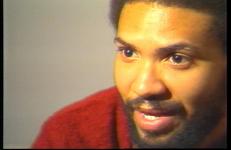
Juliana Huxtable was born in Texas and studied at Bard College, NY. An artist working across video, photography, poetry, and music, her practice demands a reexamination of the canon of art history in order to break the cycle of misrepresentation and under-representation in the contemporary art world.

The 1970s witnessed unprecedented artistic development of non-traditional media – chief among them were textiles and fabrics. Diane Itter was at the forefront of this boom in craft-oriented art making, designing colorful, geometric and exceedingly intricate fiber works that demanded near countless hours of time to execute. In this interview she discusses her practice, as well as the pitfalls that are encountered while working in what was – at the time of the interview – a still largely marginalized art form.
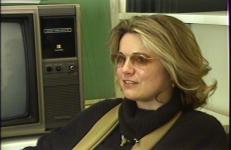
Alfredo Jaar is a politically motivated artist whose work includes installation, photography and film. Born in Chile and now living in the U.S., Jaar’s socio-critical installations explore global political issues, frequently focusing on the Third World and the relationship between consumption and power. A 1988 installation in a subway station in New York involved dramatic photographs of impoverished gold miners n Brazil interspersed with quotations of current gold prices, drawing an unexpected parallel between the material desires that motivate people in both poverty-stricken Br
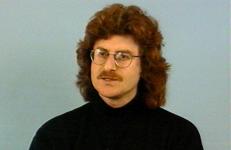
In this 1993 contribution to the On Art and Artists series, artist Art Jones describes his entry into the world of activist media, and the genesis of his belief in the potential for a democratized street-level media. Hailing from the Bronx, Jones recalls his personal dislocation during college, when he began studying film and video at SUNY Purchase. At that time, Jones experienced a cultural isolation, which he mobilized to fuel his practice. This willingness to confront issues of representation and absence, asserting the validity of his own subjecthood, would become a defining characteristic of his work.
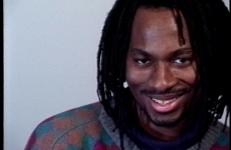
Miranda July (b.1974) makes performances, movies, and recordings—often in combination. Her videos (The Amateurist, Nest of Tens, Getting Stronger Every Day) present complicated parallel narratives with characters who experience loneliness, exploitation, unexpected phobias, and often inexplicable relationships. July has also recorded several performance albums released by Kill Rock Stars and K Records. In 1995 she founded Joanie 4 Jackie, an on-going movie distribution network for independent women movie makers.
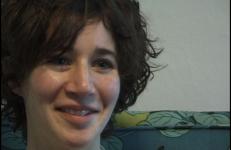
Tom Kalin is a screenwriter, film director, producer, and educator. As a key figure in New Queer Cinema, his work focuses on the portrayal of gay sexuality both in the age of AIDS and historically. Informed by his work with two AIDS activist collectives, ACT UP and Gran Fury, Kalin’s video work is characterized by appropriated images, original portraits, and performances.
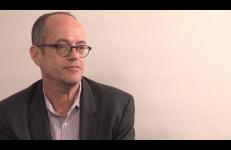
Since the 1970s Mary Kelly (b.1941) has worked at the fore of feminist art and theory. She has continued to address issues and methods of activist politics, psychoanalysis, political science, literature, and the history of women and gender. Kelly received recognition in the early ’80s for her epic six-year project, The Post Partum Document, a mixed-media work chronicling her and her son’s development. Kelly says her work revolves “around the recurring themes of body, money, history, and power” in this interview with Judith Russi Kirschner.
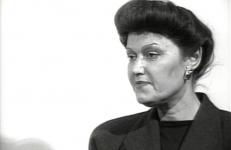
The interstice of art and technology has proved to one of the most generative locations in contemporary transdisciplinarity. As media of all kinds become more electronically integrated and digitized across multiple platforms, current technologies approach a condition of complete imbrication with art practices, and vice versa. Ben Knapp and Andy Diaz Hope have been at the forefront of these techno-aesthetic interactions, and their career experience as hard-science engineers brings a level of practical competence to this interview that is truly enlightening.
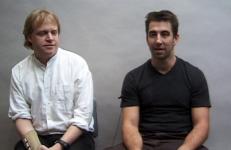
British-Ghanaian, writer, theorist and filmmaker Kodwo Eshun (b.1967) is known for his interest in the electronic mythology of sound. In this interview, Eshun discusses his desire to challenge the predominance of sociological inquiries into the historical and stylistic development of music. Eshun seeks to establish a model of inquiry that is much more concerned with the materiality of sound.
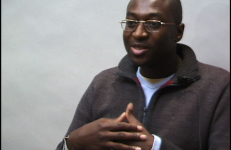
In this interview, Phyllis Kornfeld, author of Cellblock Visions: Prison Art in America, describes her initial interest in working with prisoners in her native Oklahoma City, stemmed from an exploration of outsider artists. Detailing her first visit to a high security prison as a ‘mind blowing and breathtaking’ experience, Kornfeld discusses how she came to her realization that prisons are fertile environments for free form experimentation with the teaching process. She learned that through personalized art education, inmates could teach themselves to make positive contributions to society. - Kyle Riley
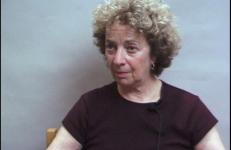
For Shigeko Kubota the video image-making process is a cultural and personal experience. She has explored cross-cultural relationships in her video diaries, transient images captured by portable equipment while traveling—Kubota’s “comparative videology.” She has also combined fleeting video images with the “objecthood” of sculptural form in her series of video sculptures inspired by Duchamp.
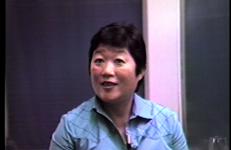
Beloved by filmmakers such as John Waters and Todd Solondz, George Kuchar has been working with the moving image for nearly half a century. In the 1950s, Kuchar and his twin brother Mike began producing ultra-low-budget underground versions of Hollywood genre films, with names like I Was a Teenage Rumpot and The Devil's Cleavage.
